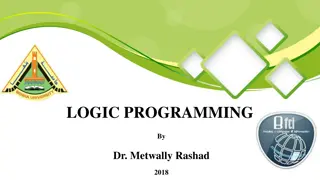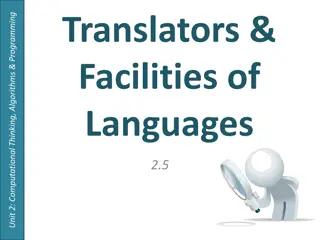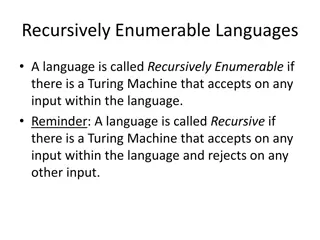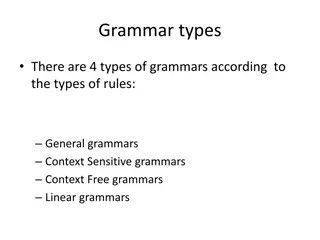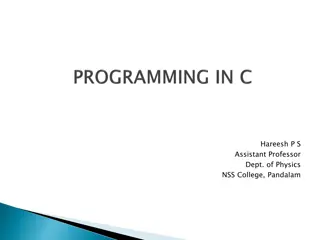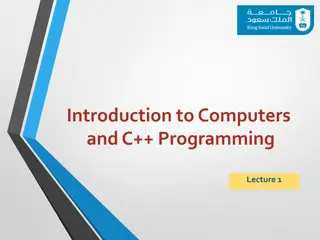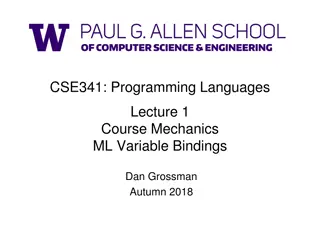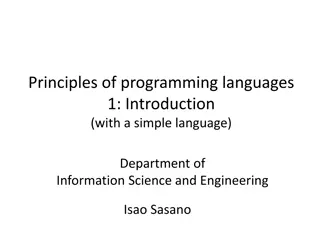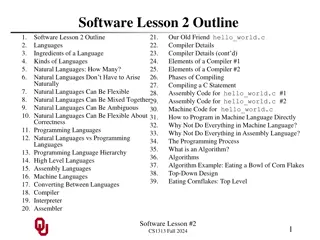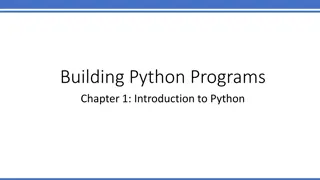Introduction to Programming Languages
Delve into the world of programming languages, exploring machine language, low-level language, high-level language, data representation, numbering systems, encoding types, and computer instruction sets. Understand the intricacies of integer and floating-point representation, and the modes of data representation.
Uploaded on Feb 22, 2025 | 2 Views
Download Presentation

Please find below an Image/Link to download the presentation.
The content on the website is provided AS IS for your information and personal use only. It may not be sold, licensed, or shared on other websites without obtaining consent from the author.If you encounter any issues during the download, it is possible that the publisher has removed the file from their server.
You are allowed to download the files provided on this website for personal or commercial use, subject to the condition that they are used lawfully. All files are the property of their respective owners.
The content on the website is provided AS IS for your information and personal use only. It may not be sold, licensed, or shared on other websites without obtaining consent from the author.
E N D
Presentation Transcript
A LECTURE NOTE A LECTURE NOTE
Introduction to Programming languages
Data Representation & Numbering Systems
American Standard Code for Information Interchange (ASCII)
Extended Binary Coded Decimal Interchange Code (EBCDIC)
It uses computer storage more efficiently
It takes less time to process in a computer than any other programming language
It is expensive in program preparation and debugging stages
usually defined by the hardware manufacturer, and is based on abbreviations (called mnemonics) that help the programmer remember individual instructions, registers, etc. An assembly language is thus specific to a certain physical or virtual computer architecture (as opposed to most high-level languages, which are usually portable).
assembler performs a more or less isomorphic translation (a one-to-one mapping) from mnemonic statements into machine instructions and data. (This is in contrast with high-level languages, in which a single statement generally results in many machine instructions.)
processor instructions, or to address critical performance issues. The following section of an assembly language program also adds overtime to base pay and stores the result in gross pay:
It is more efficient than machine language
Symbols make it easier to use than machine language
clearer to humans, they are incomprehensible to computers until they are translated to machine language.




